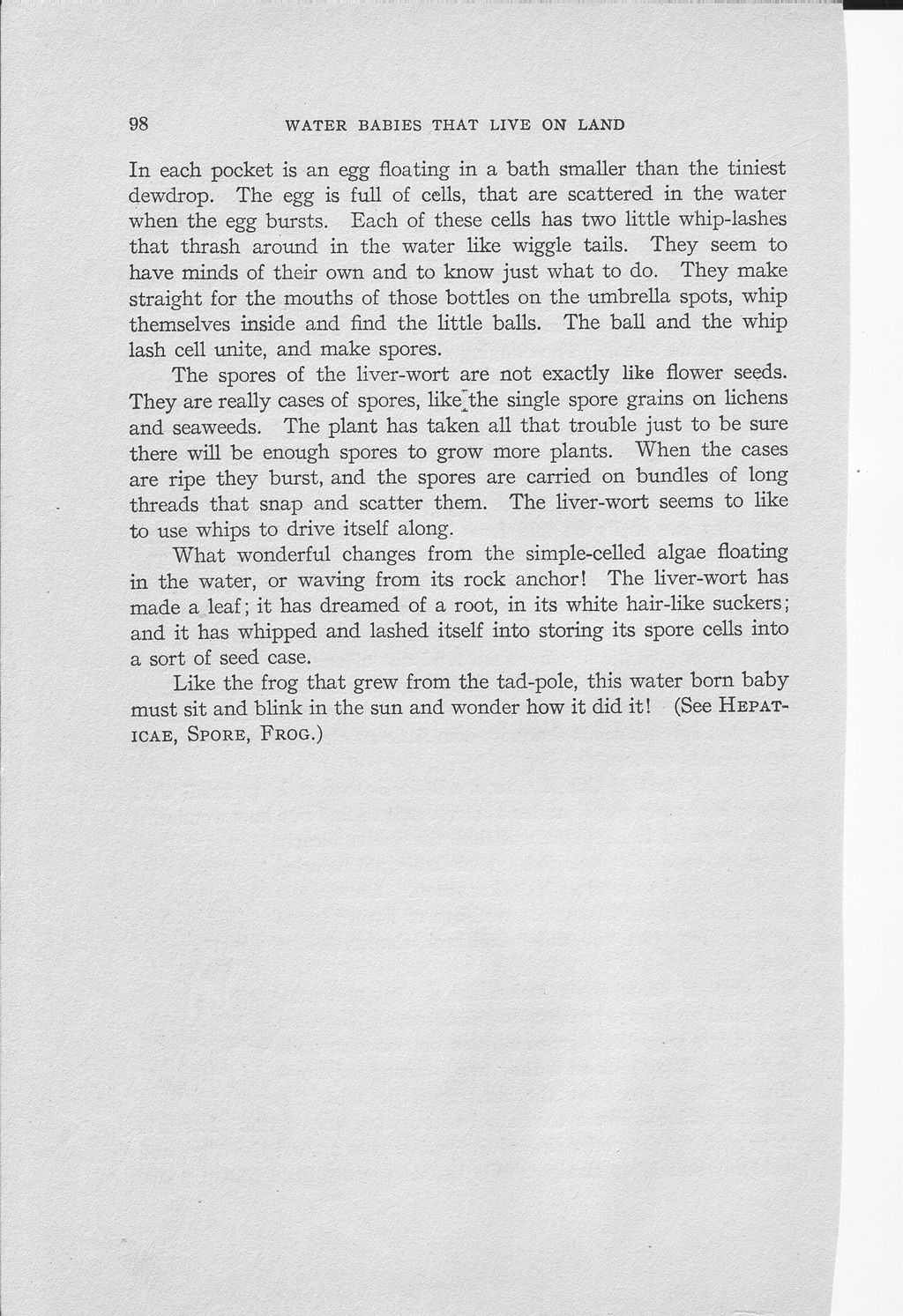In each pocket is an egg floating in a bath smaller than the tiniest dewdrop. The egg is full of cells, that are scattered in the water when the egg bursts. Each of these cells has two little whip-lashes that thrash around in the water like wiggle tails. They seem to have minds of their own and to know just what to do. They make straight for the mouths of those bottles on the umbrella spots, whip themselves inside and find the little balls. The ball and the whip lash cell unite, and make spores.
The spores of the liver-wort are not exactly like flower seeds. They are really cases of spores, like the single spore grains on lichens and seaweeds. The plant has taken all that trouble just to be sure there will be enough spores to grow more plants. When the cases are ripe they burst, and the spores are carried on bundles of long threads that snap and scatter them. The liver-wort seems to like to use whips to drive itself along.
What wonderful changes from the simple-celled algae floating in the water, or waving from its rock anchor! The liver-wort has made a leaf; it has dreamed of a root, in its white hair-like suckers; and it has whipped and lashed itself into storing its spore cells into a sort of seed case.
Like the frog that grew from the tad-pole, this water born baby must sit and blink in the sun and wonder how it did it! (See Hepticae, Spore, Frog.)
